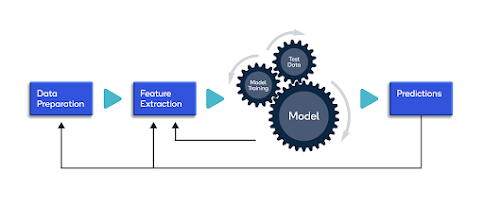If you've been hearing terms like "Machine Learning" or "AI" and wondering what they're all about, you're in the right place. Machine learning might sound like something only tech experts understand, but in reality, it's becoming part of our everyday lives. Today, I'll take you through the basics of machine learning in a way that’s easy to understand—no coding or math required!
What Is Machine Learning?
At its core, Machine Learning (ML) is a type of technology that allows computers to learn from experience. Instead of programming a computer with specific instructions for every possible situation, we can "teach" it to recognize patterns, make decisions, and even improve over time.
Think of it like teaching a kid to recognize animals. Rather than telling them to look for specific details, you’d show them examples of dogs, cats, or birds, and eventually, they start to recognize animals on their own. That’s exactly what ML does, but with data instead of pictures!
Is Machine Learning Everywhere?
Machine learning is behind many things we interact with every day, often without us even realizing it. Here are a few examples:
- Social Media Feeds – Ever noticed how your Instagram feed seems to “know” which posts you’ll like? That’s ML analyzing your behavior and serving up content you’re likely to enjoy.
- Personalized Recommendations – Whether it’s Netflix suggesting movies or Amazon recommending products, these are based on ML algorithms that analyze your preferences.
- Virtual Assistants – Siri, Alexa, and Google Assistant all rely on ML to understand your voice and respond appropriately.
- Spam Filters – Email platforms like Gmail use ML to separate spam from important emails by analyzing patterns in content, sender, and behavior.
How Does Machine Learning Work?
Let’s break down the machine learning process into three simple steps:
Data Collection – Machine learning begins with data. Just like we learn from experiences, machines learn from data. This data can be anything from images, text, numbers, or audio.
Training the Model – Once we have data, we need to “train” a model. This step involves feeding data into an algorithm that helps the computer recognize patterns. It’s like teaching a dog to sit—you show it enough times, and eventually, it learns.
Making Predictions – After training, the model can make predictions or decisions based on new data. For example, a trained model can look at a new email and predict whether it’s spam or not.
Types of Machine Learning
There are several types of machine learning, but here are the main ones:
Supervised Learning – This is like having a teacher. The algorithm is trained on data where the correct answer is already known. For example, we show it lots of photos of cats and dogs and tell it which is which. Over time, it learns to identify them.
Unsupervised Learning – Here, the algorithm explores patterns in data without guidance. Think of it as exploring on its own. This is useful for grouping similar items together, like finding similar songs or grouping customers by preferences.
Reinforcement Learning – This type involves learning through trial and error. Imagine teaching a robot to walk; it tries, fails, and adjusts its steps until it finds the best way to move forward.
Why Should You Care About Machine Learning?
Machine learning is reshaping the world, impacting industries like healthcare, finance, and entertainment. Understanding the basics can help you better navigate and leverage the technology that surrounds us. You don’t need to be a programmer to appreciate ML; just knowing how it works can make you more tech-savvy and even help you spot opportunities to use these tools in your own life.
Final Thoughts
Machine learning might seem intimidating at first, but breaking it down into simple concepts makes it more approachable. I hope this introduction has given you a clearer picture of what machine learning is and why it's everywhere around us.
Thanks for reading, and stay tuned for more posts where I’ll dive deeper into how machine learning is transforming different fields and explore the tools and techniques behind this fascinating technology!
If you enjoyed this post, please leave a comment below, and feel free to suggest topics you’d like me to cover in the future. Happy learning!



%20(1).png)



Interesting 😊
ReplyDeleteCreating an amazing blog involves a mix of passion, creativity, and strategy. You got this champ keep rocking 💯✨
ReplyDeleteWell articulated and easy to follow...thank you
ReplyDeleteExcellent write up.
ReplyDeleteToo good for a starter in blogs😅
ReplyDeleteNeatly written blog to understand the basic of ML. Good work
ReplyDeleteThis is really a good start, indeed a nice read to understand ML. All the best !
ReplyDeleteVEry informative and concise at the same time. Remarkable penmanship
ReplyDelete